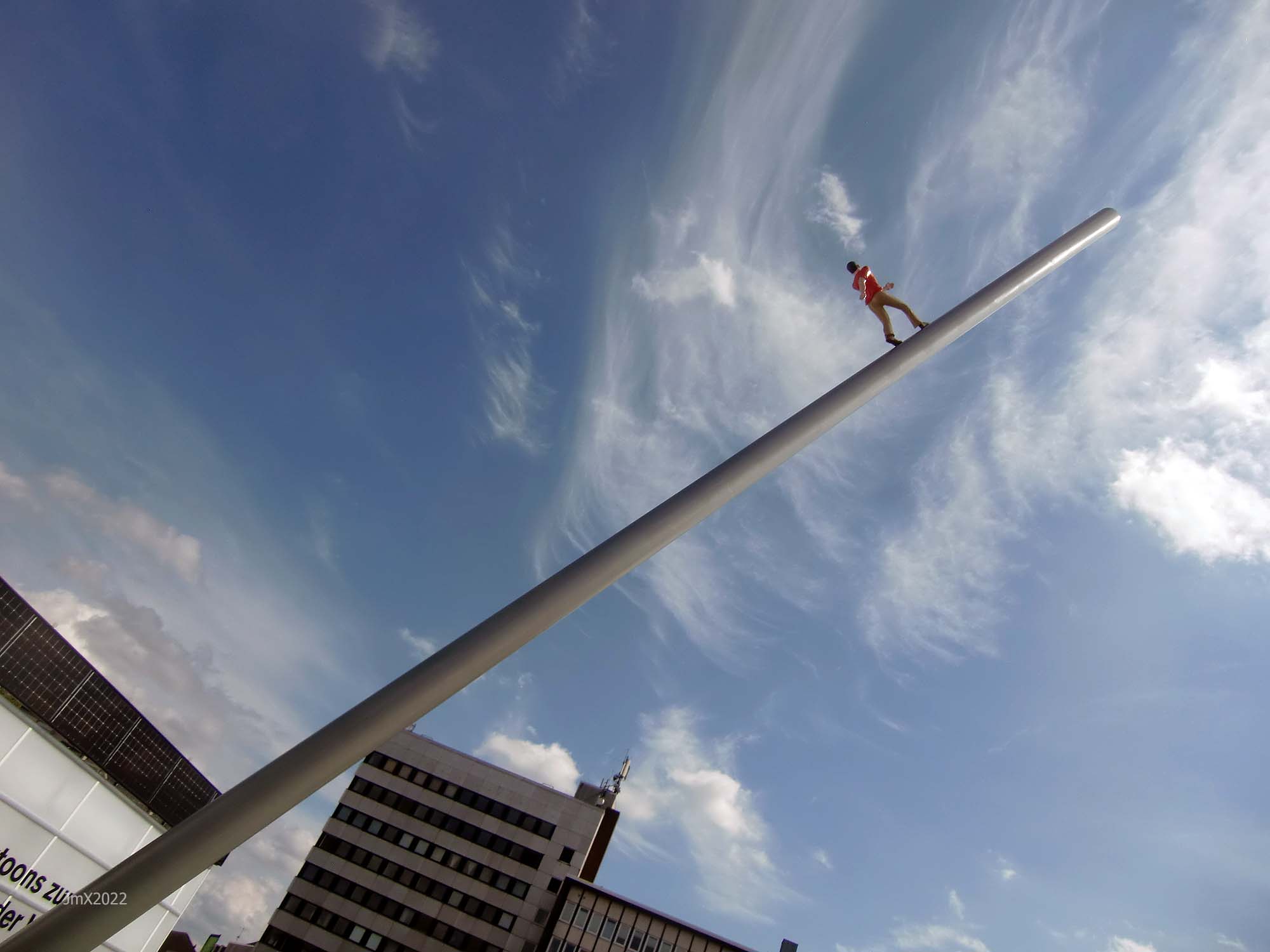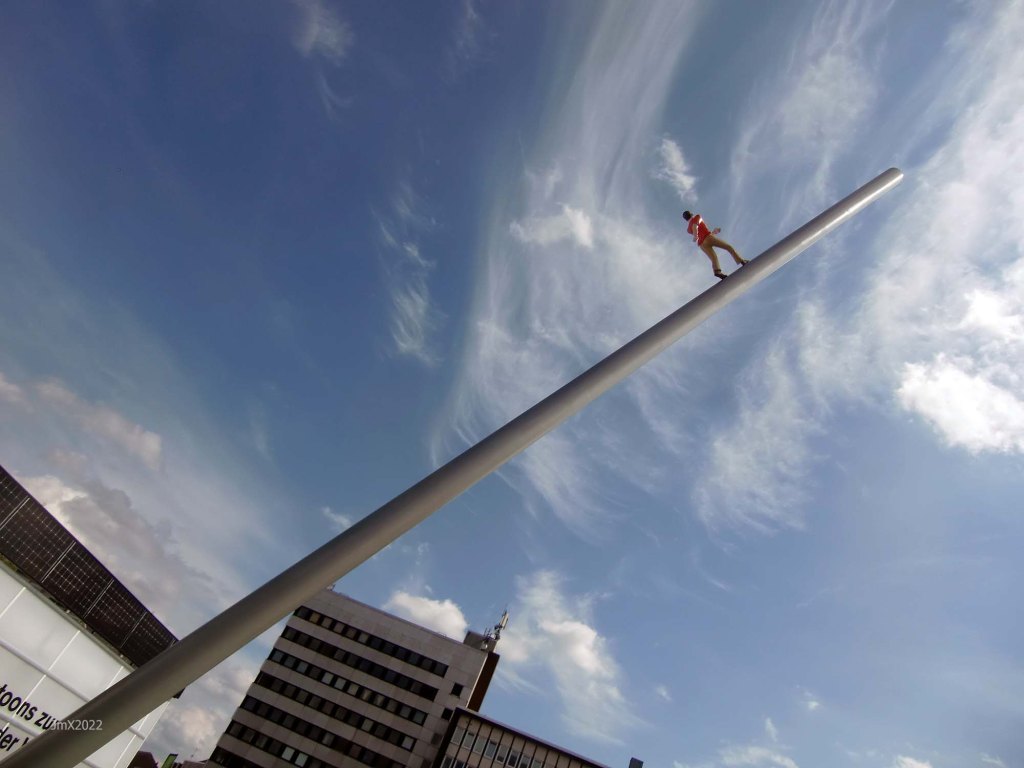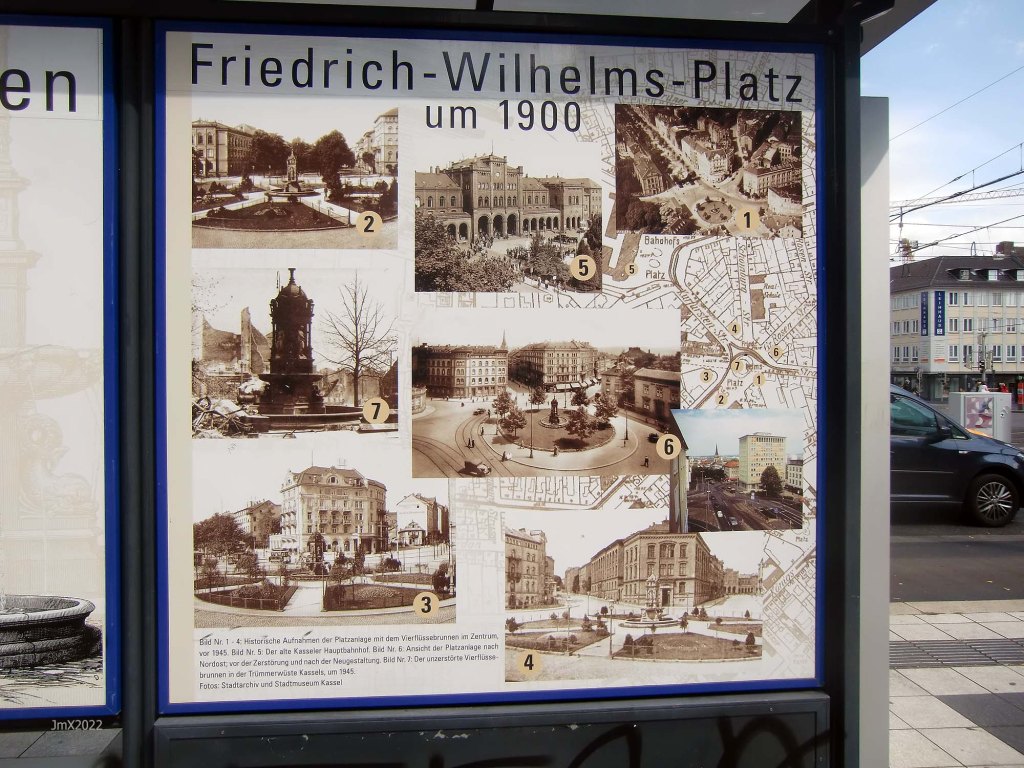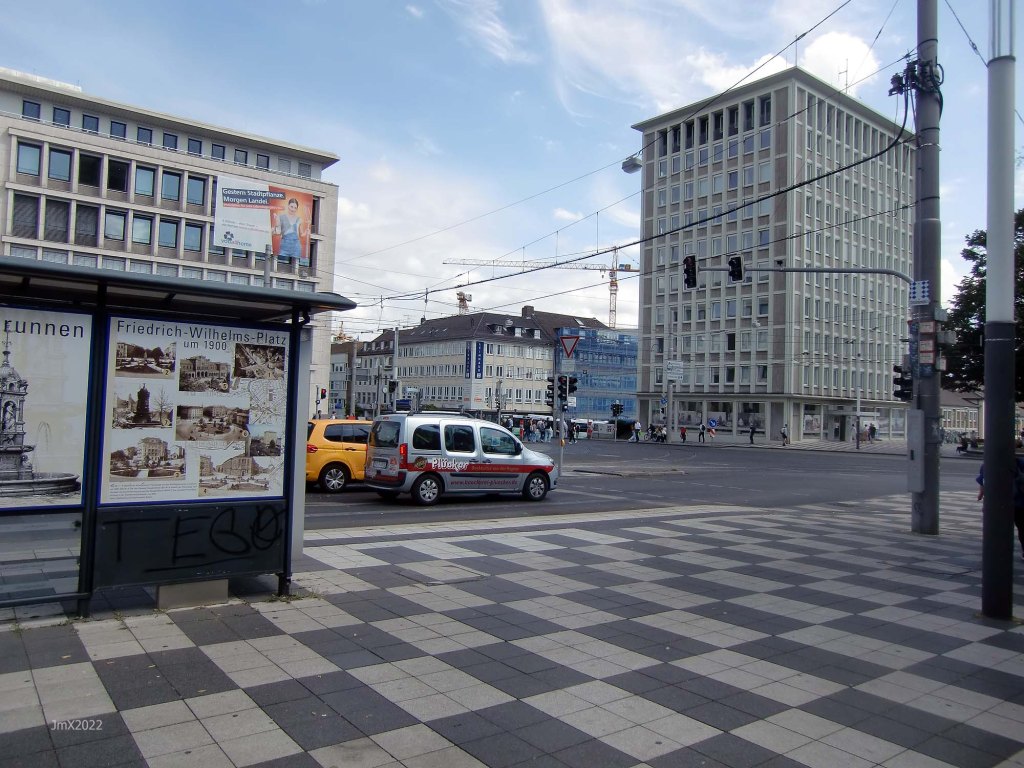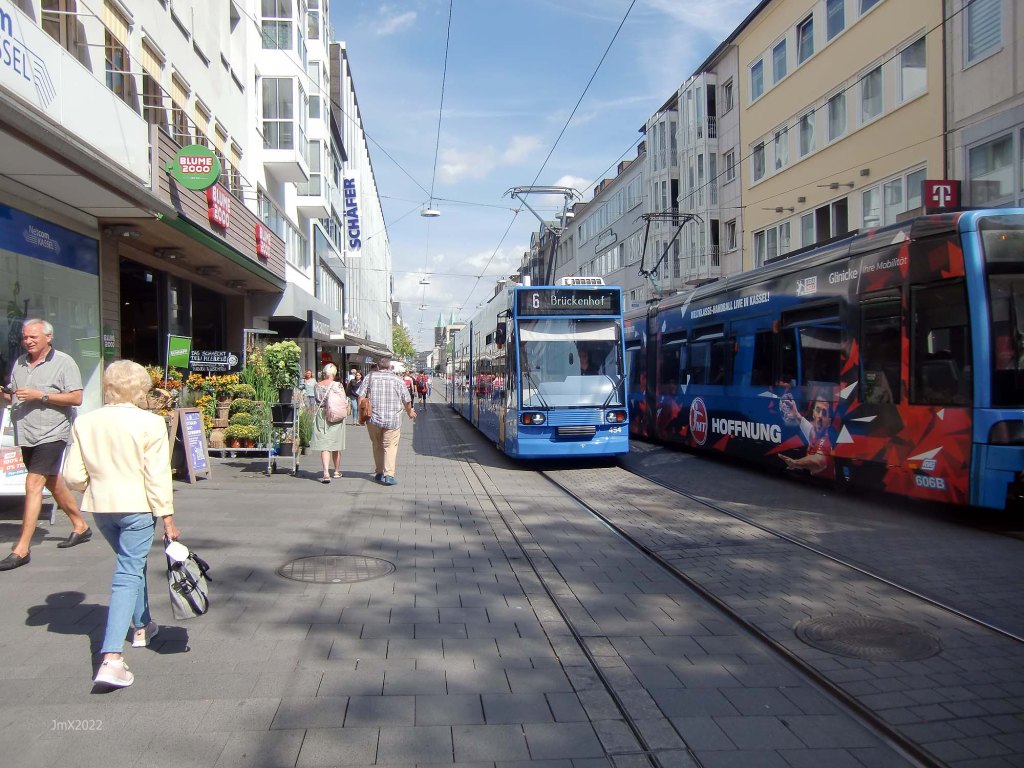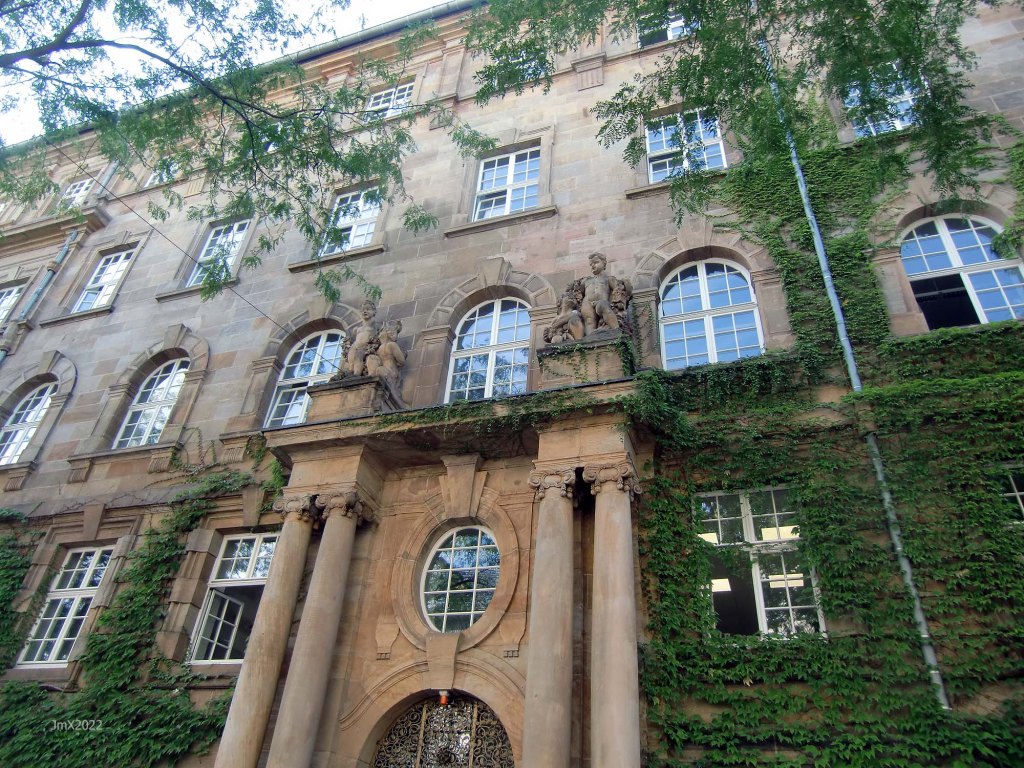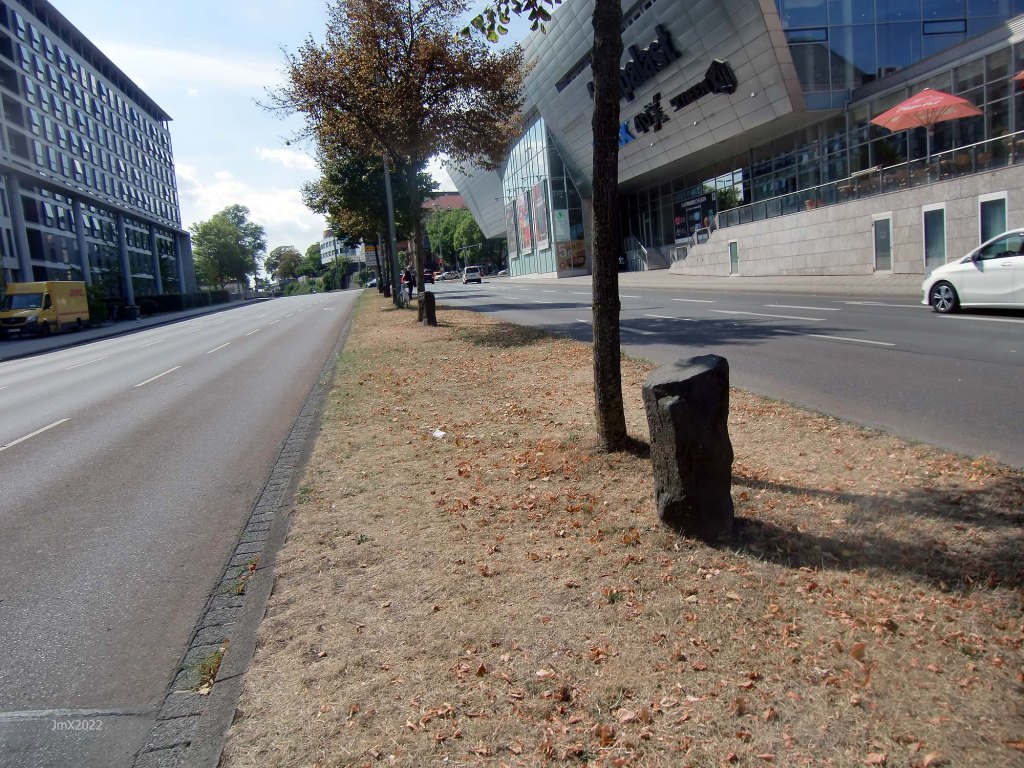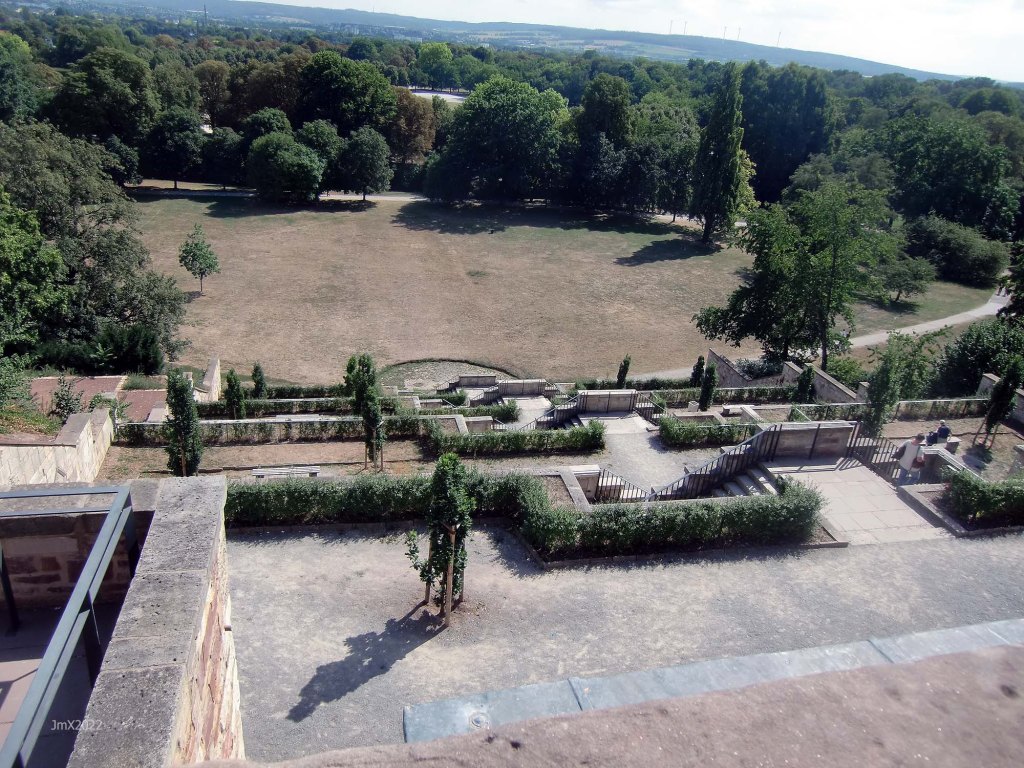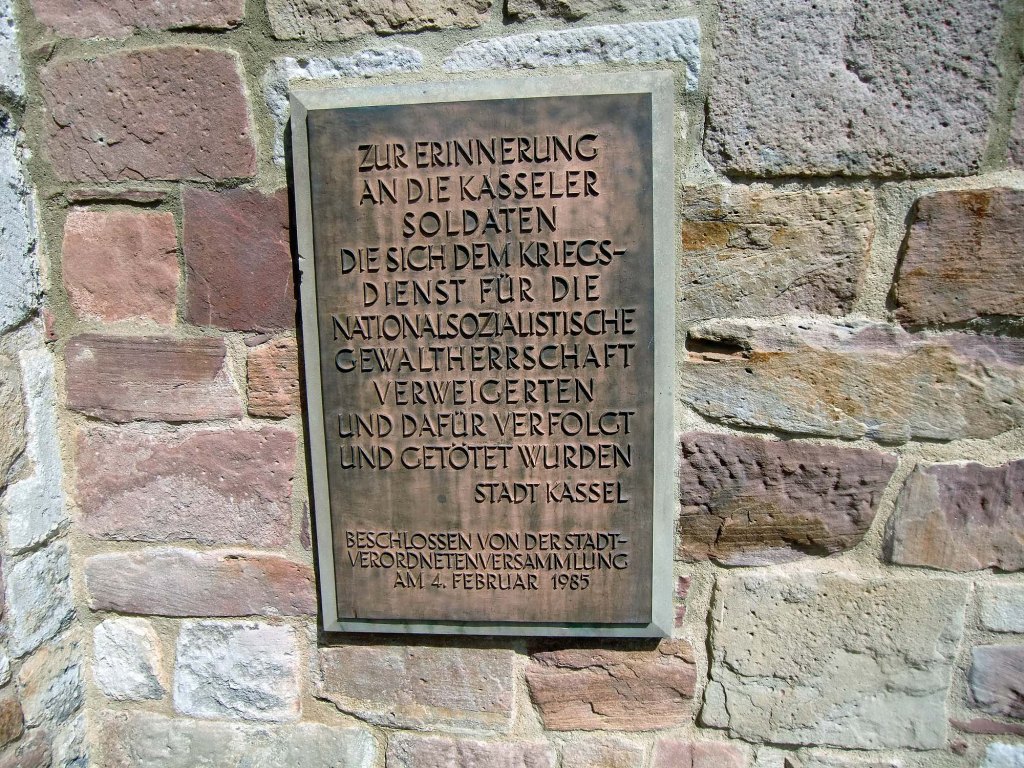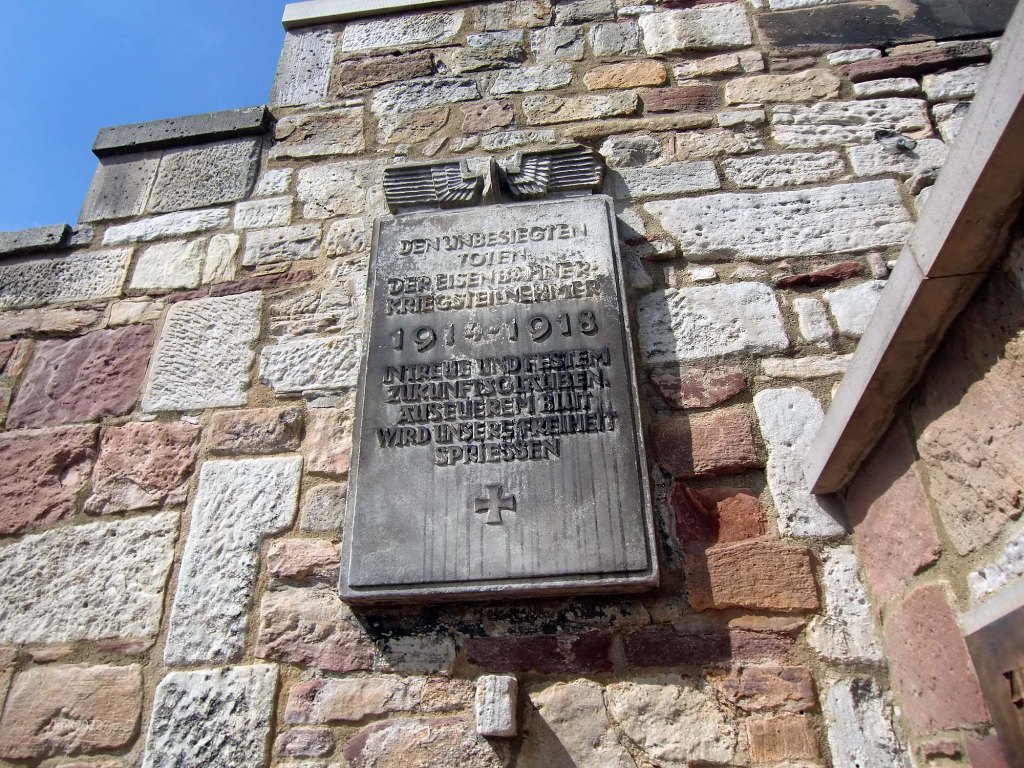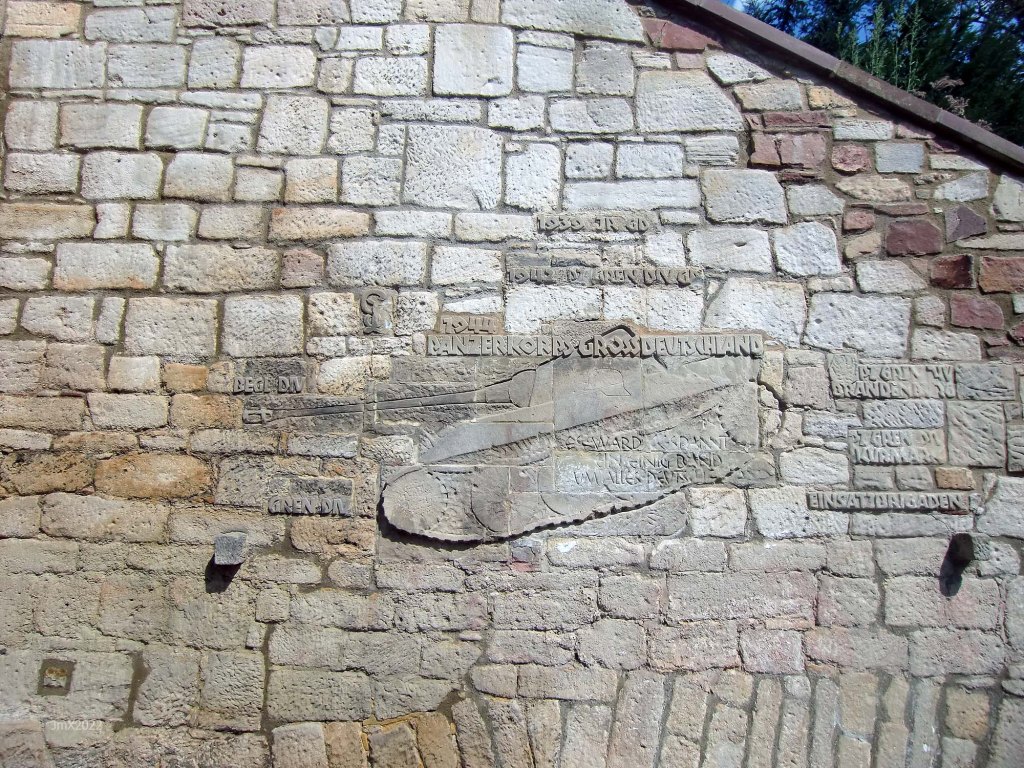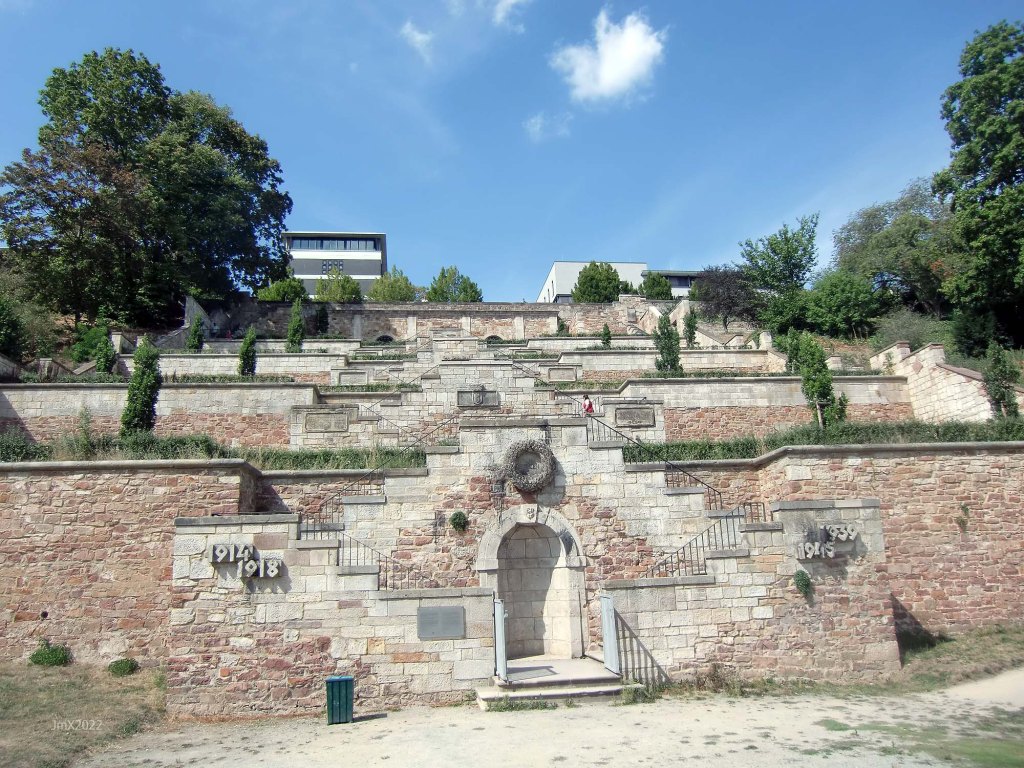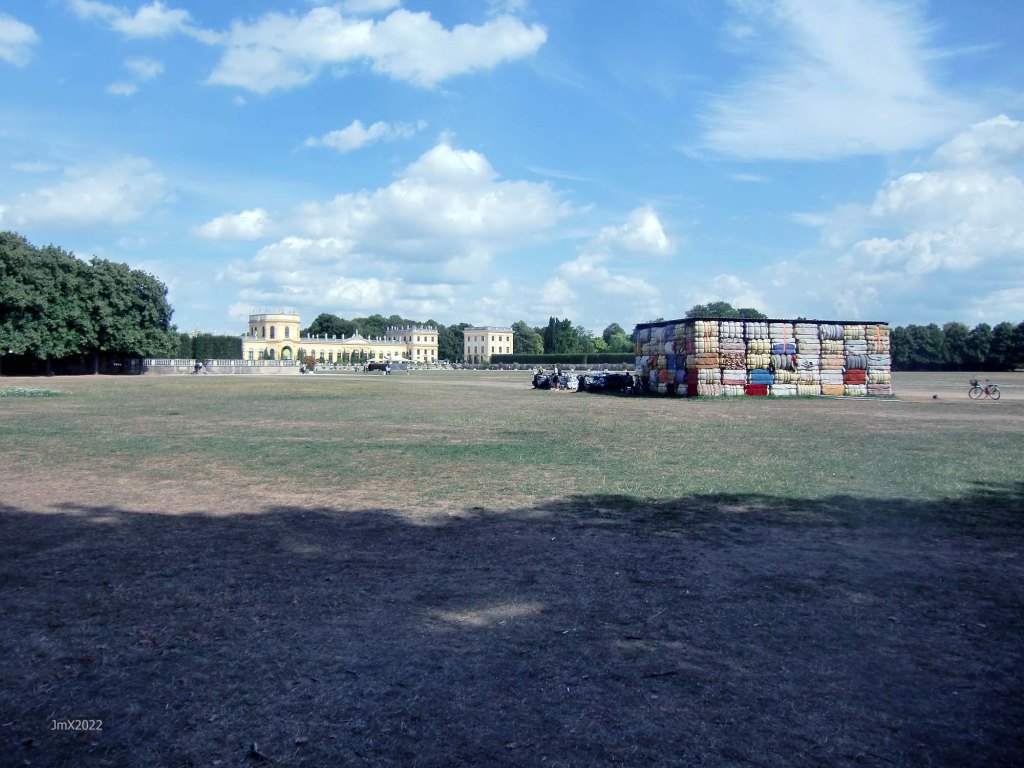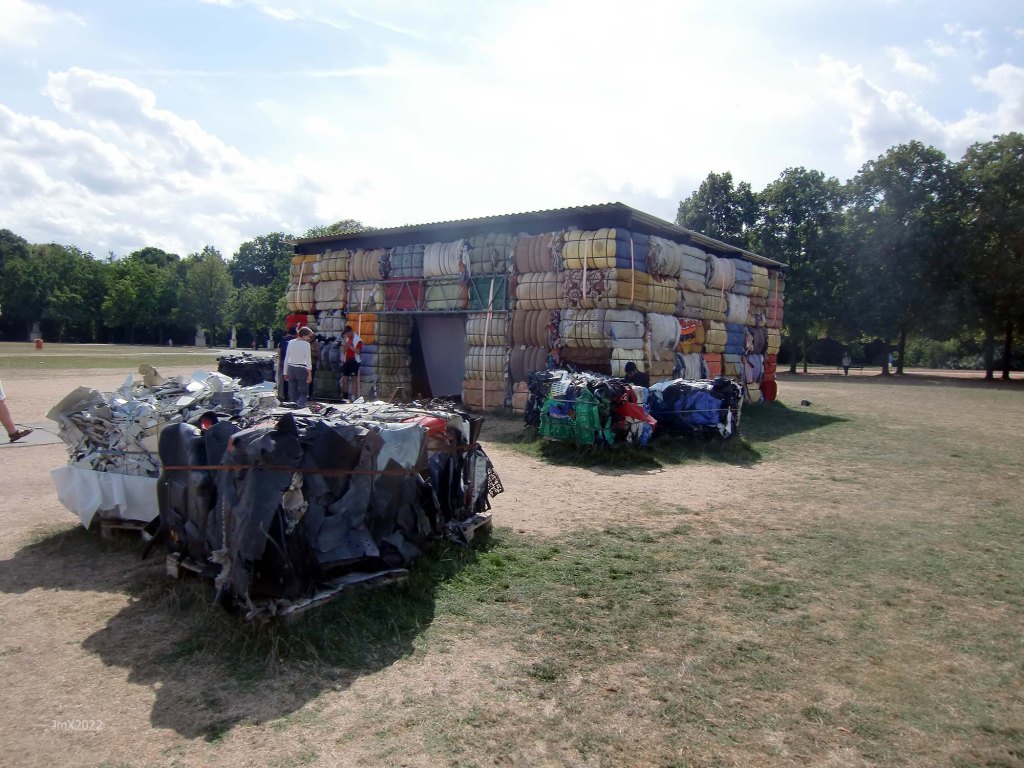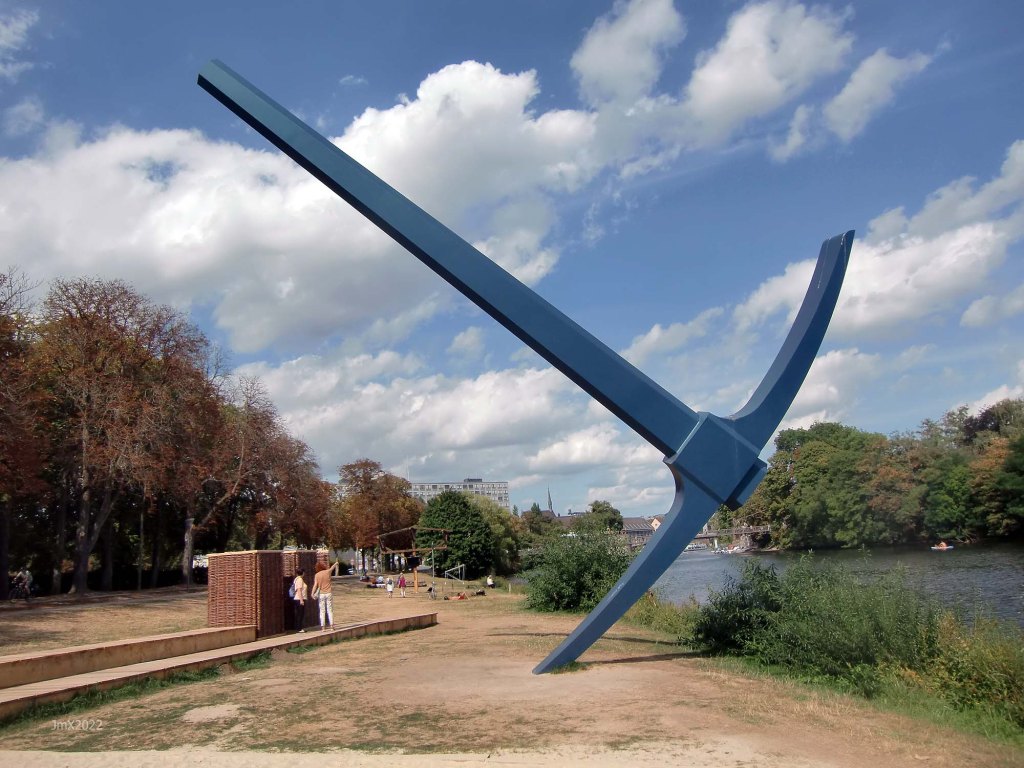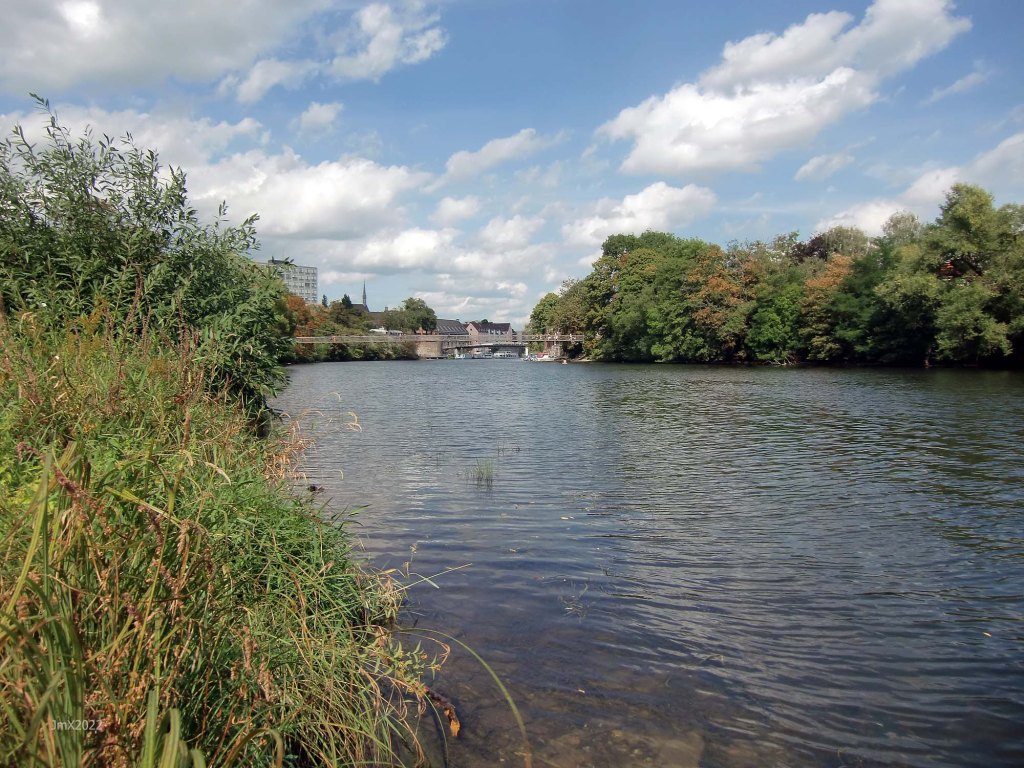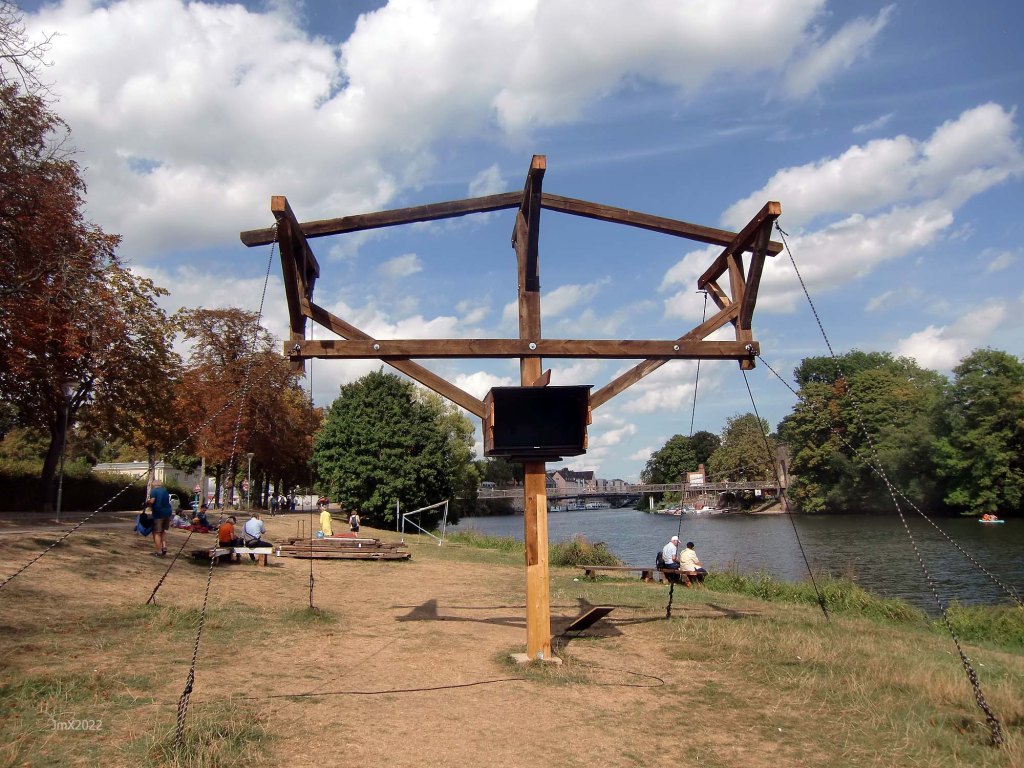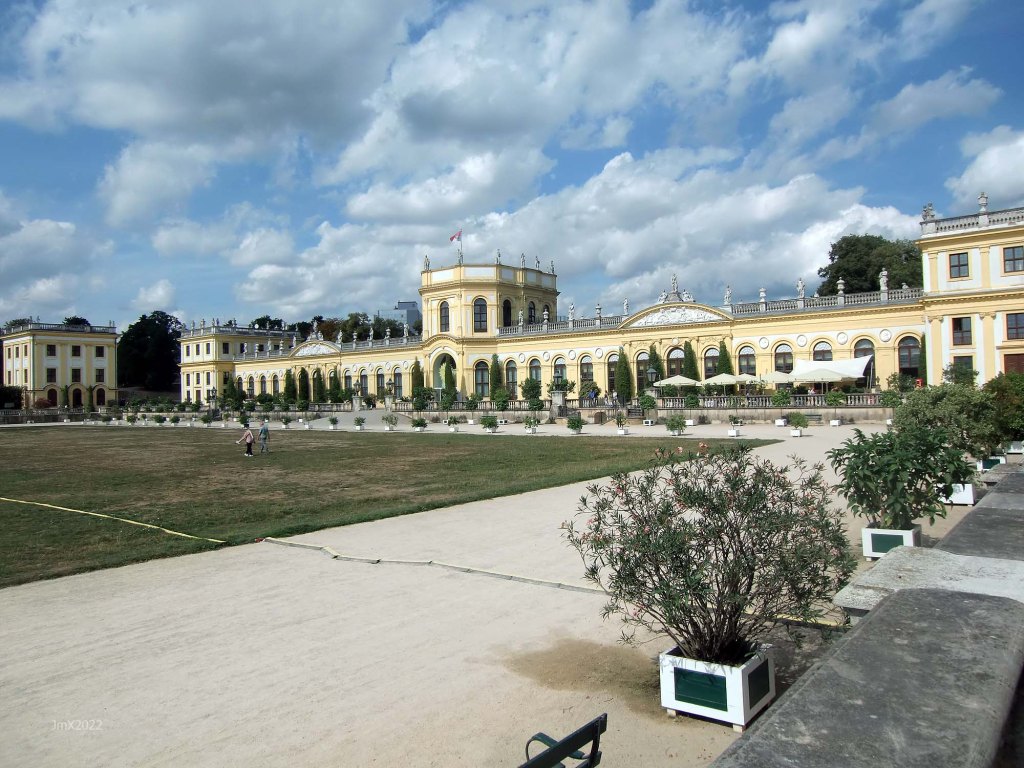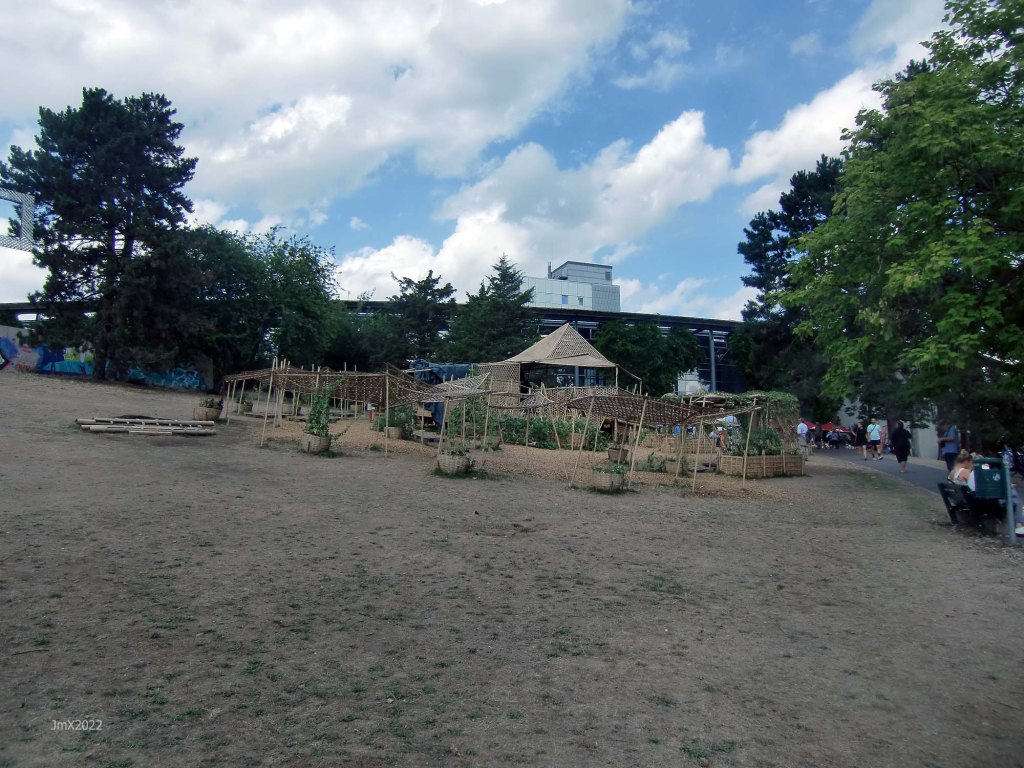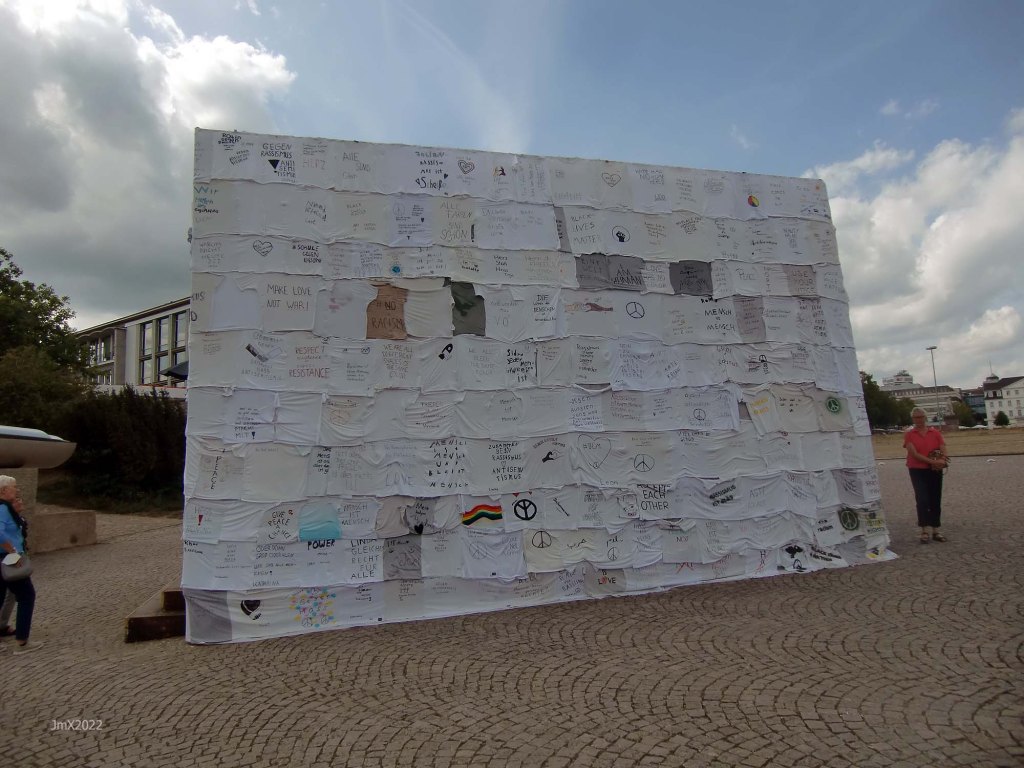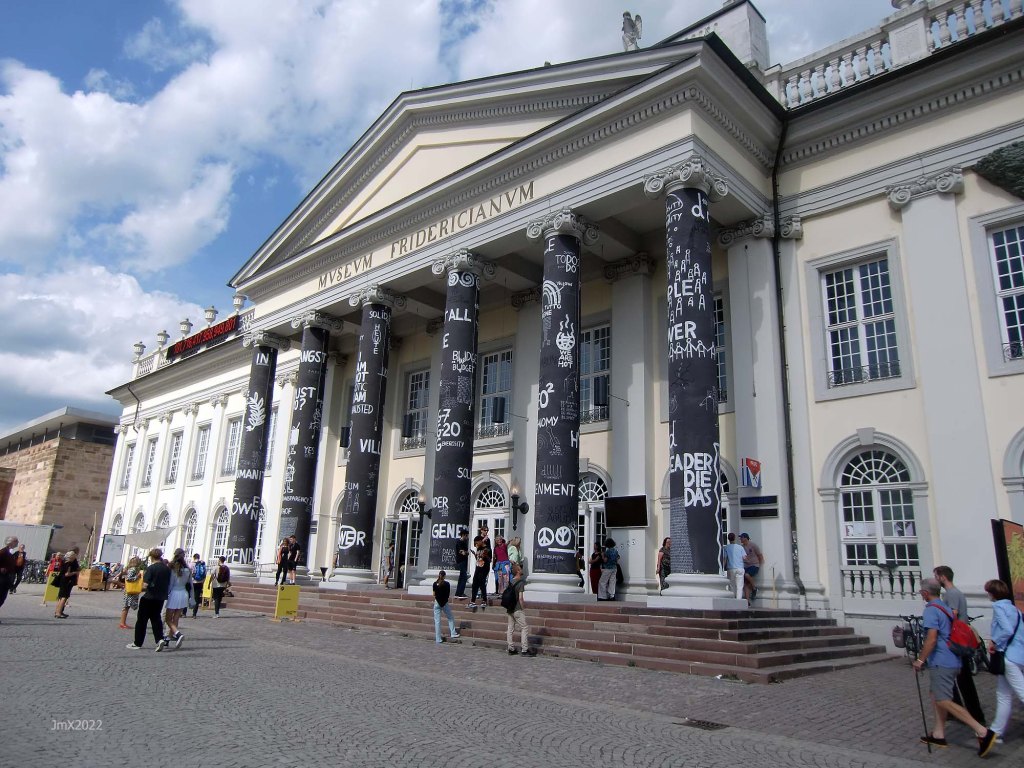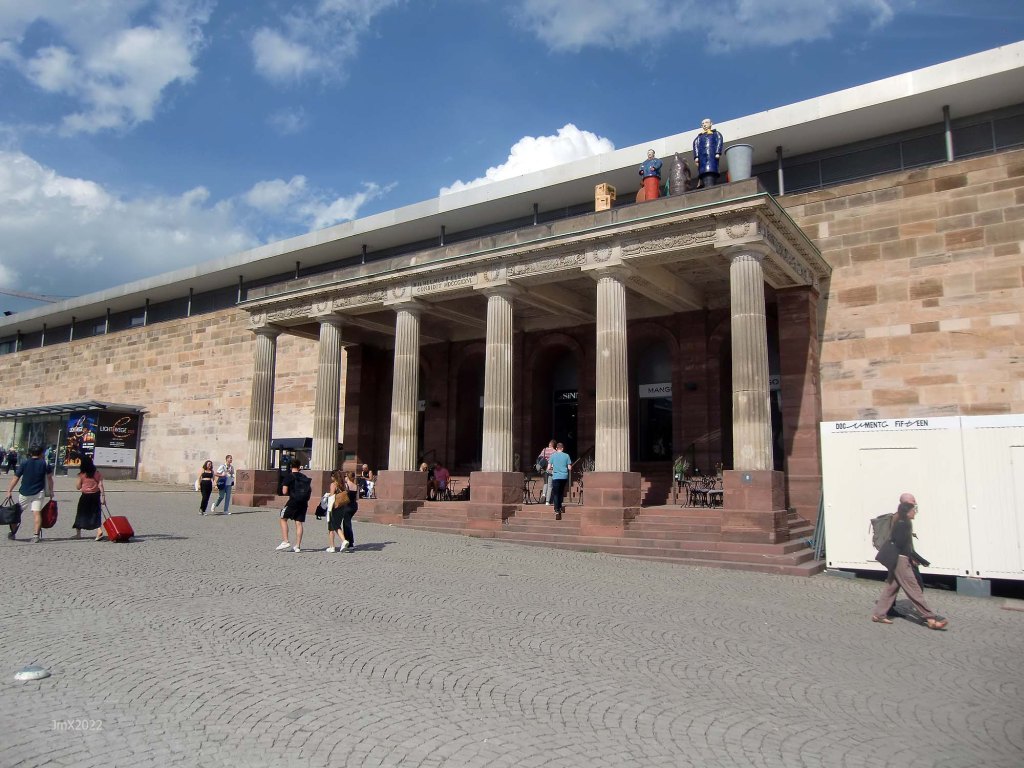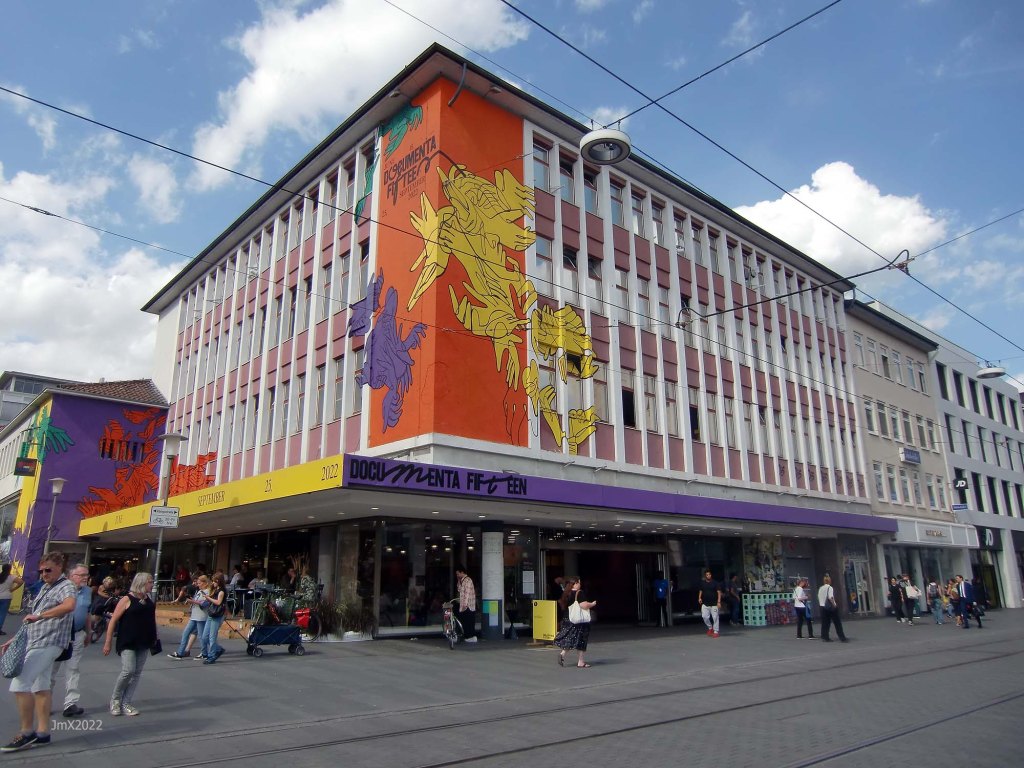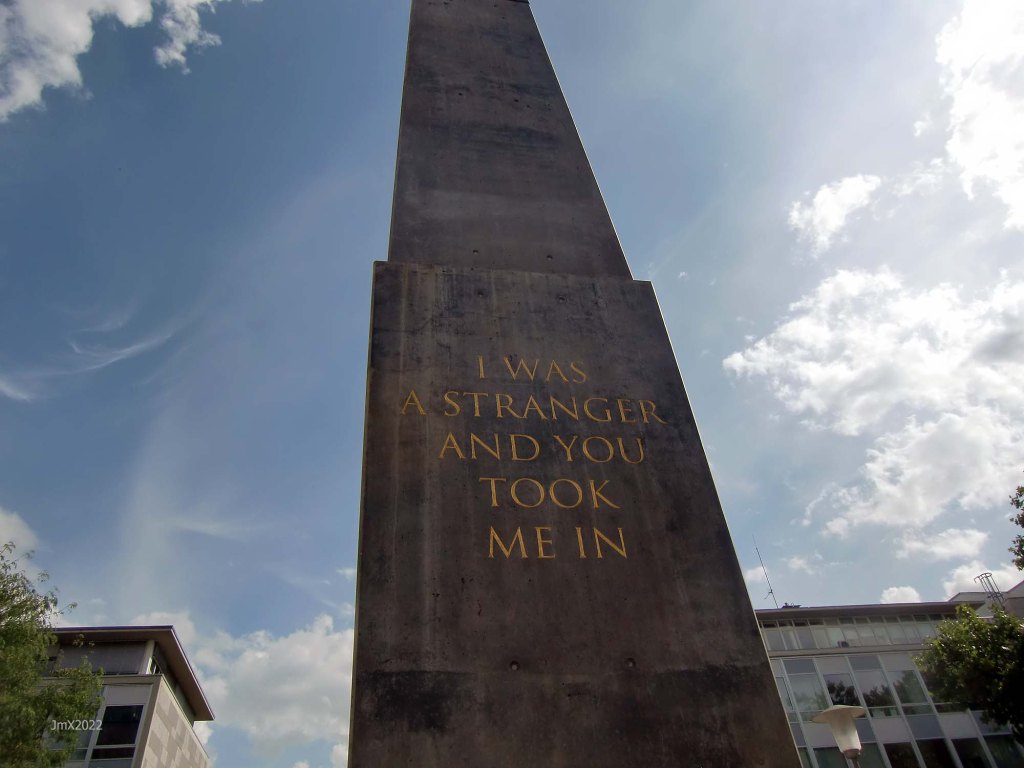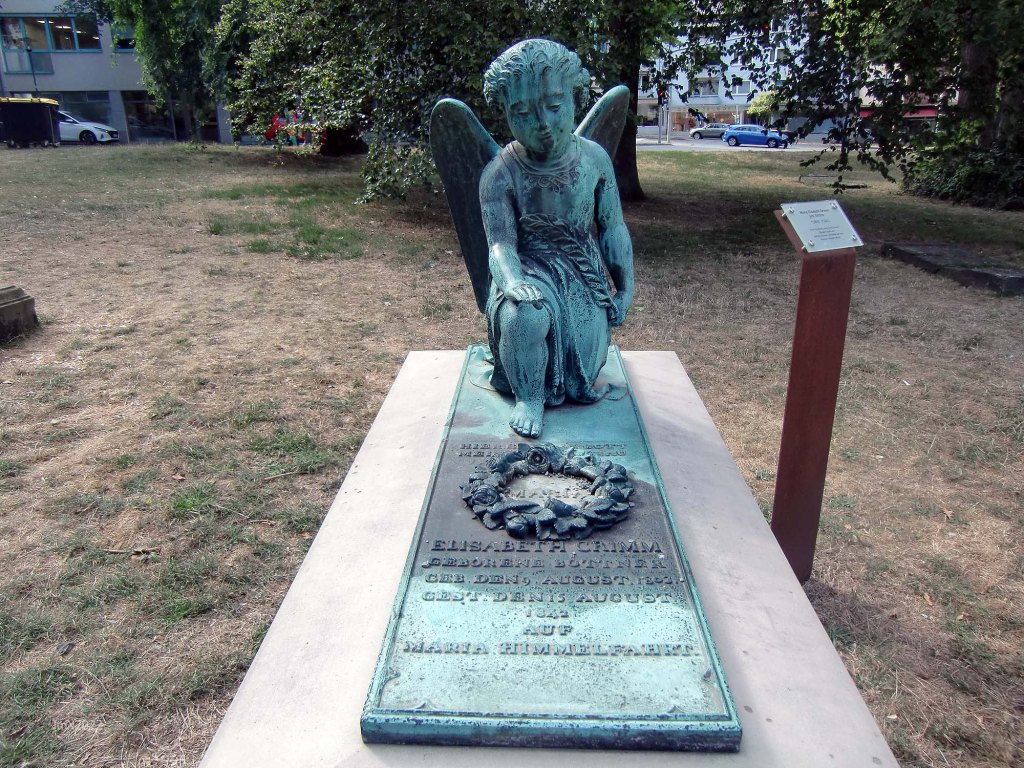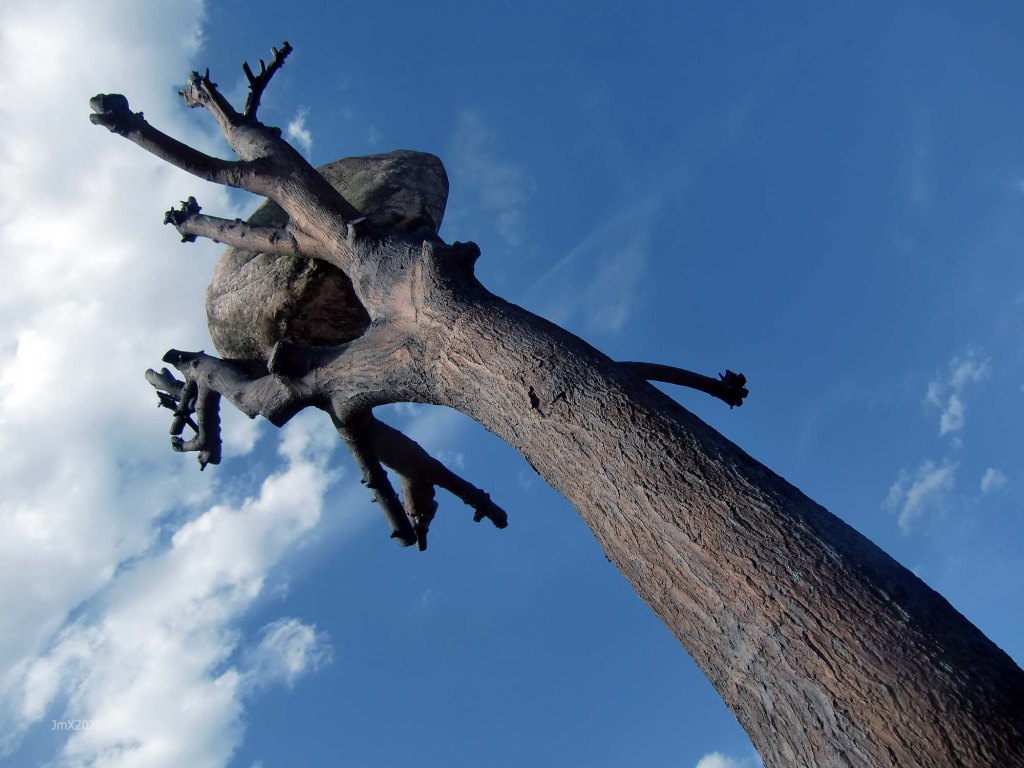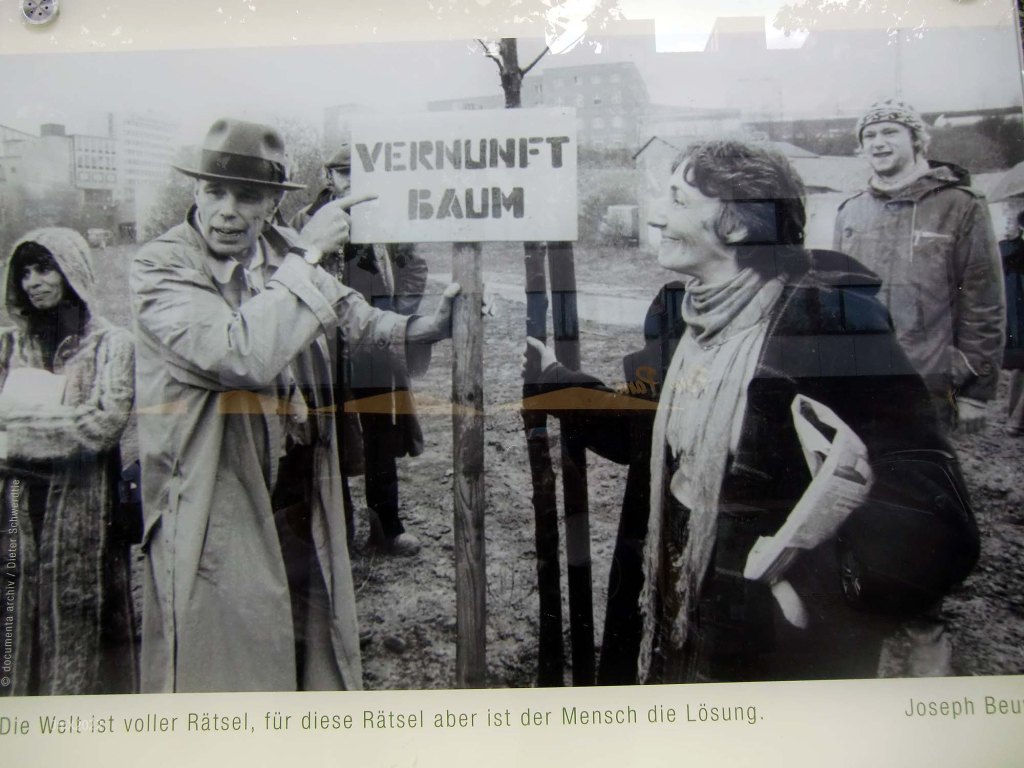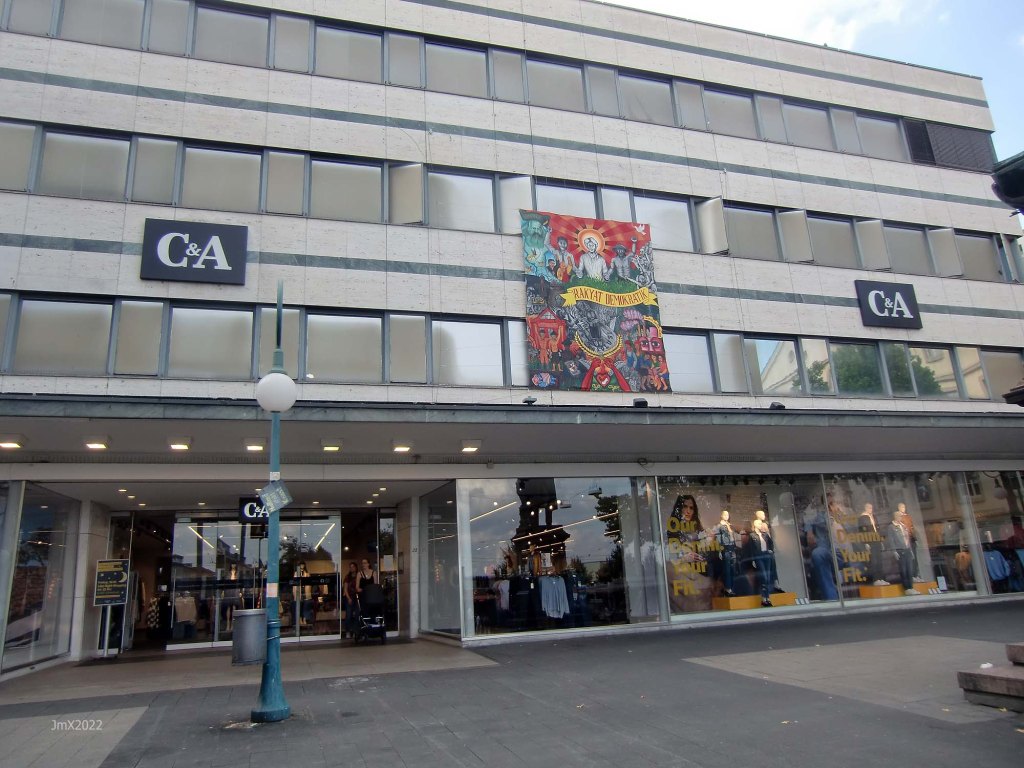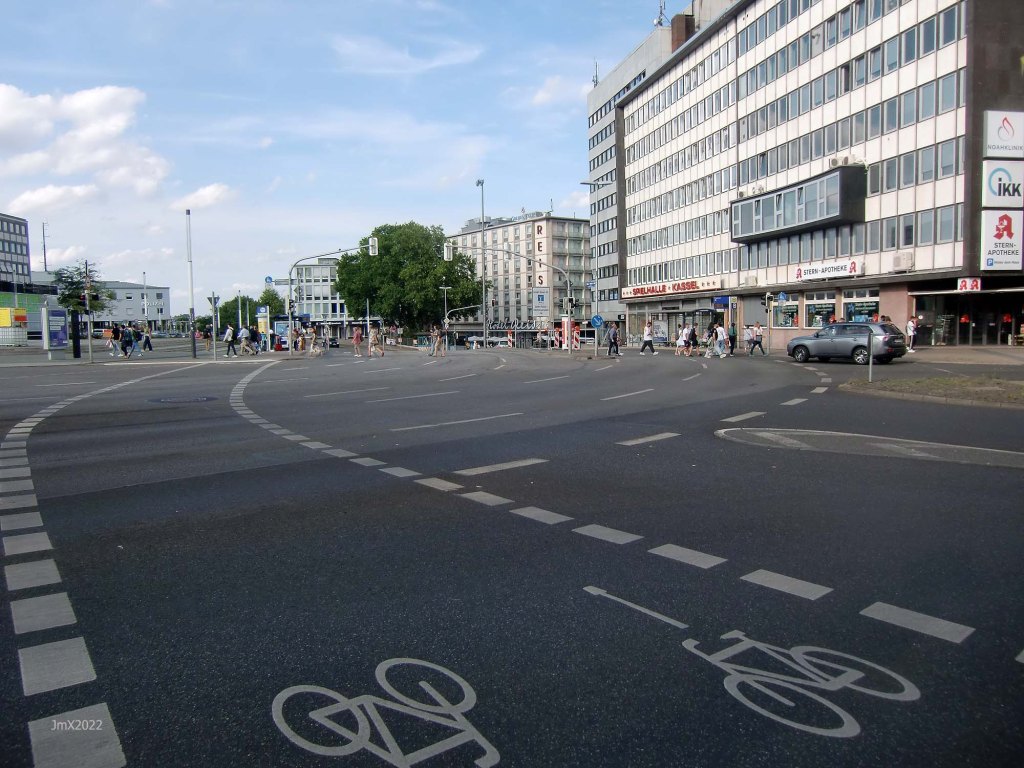With just a few days before the end of the nine Euro ticket valid on all regional transport we decided to cross state lines and revisit Kassel some 50 kilometres from Göttingen.
Tickets deals for internal travel within my home state of Lower Saxony will remain.
Kassel sits upon the Fulda River in Hesse (some may know something about the Fulda Gap – the line of march of a possible Warsaw Pact invasion of West Germany toward Frankfurt during the Cold War).
Overlooking Kassel is Bergpark Wilhelmshöhe, a UNESCO World Heritage site and we visited this on August 28, but this time we stayed downtown.

The Docummenta juxtaposed with the classical
The city of 200,000 can be traced back to 913AD and it has a rich history of events including being the birthplace of the Brothers Grimm whose mother is buried here. During World War Two ninety percent of the city centre area was destroyed by Allied bombing (Tiger Tank production being one target) and then in fierce street fighting when the US Army 80th Infantry Division took control of Kassel after a four-day battle.
Post-World War Two the city was rebuilt but there are only a few survivor buildings from before, most new builds were constructed in the modern style of the 50s and 60´s.

A memorial to the dead of two World Wars
The centre piece of Kassel is the wonderful Karlsaue Park situated upon the Fulda River it being a green oasis featuring a majestic classical Orangery and it is a reminder of what was lost.
The adjacent Mitte area is lined with cafes and there are many galleries plus shops making it a tourist’s delight, but in places the city centre area is blighted by six lane roads with few crossing points. To some extent these roads have been softened in places by a Joseph Beuys artwork which saw him plant 7,000 Oak trees (each with a granite slab) between 1982 and 1987 for Documenta 7.

Wide roads (which do get busy) softened in places by a Joseph Beuys artwork
Talking of the Documenta and we should because it is what defines modern Kassel, what would normally be a typical provincial German city becomes every four years quirky often juxtaposed with the ´normal´ and it is enlivened by one of the World’s leading art festivals.
On our visit the fifteenth Documenta was in progress and people with their exhibition maps are commonly seen moving from artwork to artwork. The joy of Kassel is coming across art in odd spots and at times they are baffling. It means that Kassel has an edge and this we loved.
Postscript
In Kassel there are three large military cemeteries highlighting the cost in life of two World Wars.
Two are German and the third is a Commonwealth Cemetery where 1800 plus Allied soldiers are laid to rest. Most died when a Typhus Epidemic swept through the 20,000 prisoners of war held in Kassel. In addition, 2,000 Russian soldiers are also commerated nearby.
Amongst their number are some 88 World War one prisoners of war who died in Göttingen and were later moved to Kassel joining others relocated from across a wide area.
No USA military dead are buried in Germany.
Websites: https://www.kassel.de/ and https://en.wikipedia.org/wiki/Kassel or https://de.wikipedia.org/wiki/Kassel
